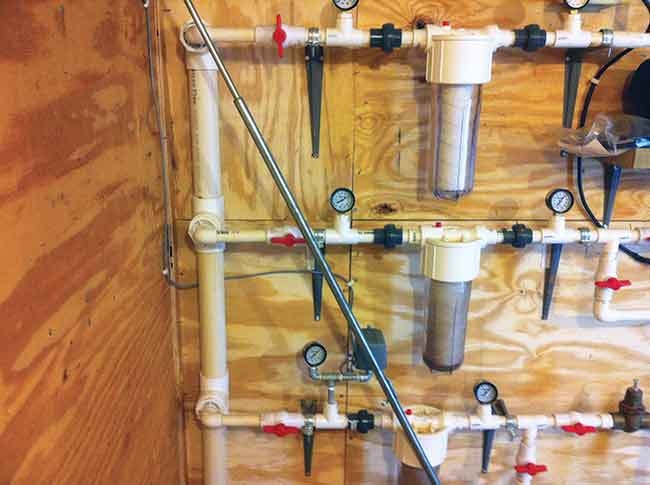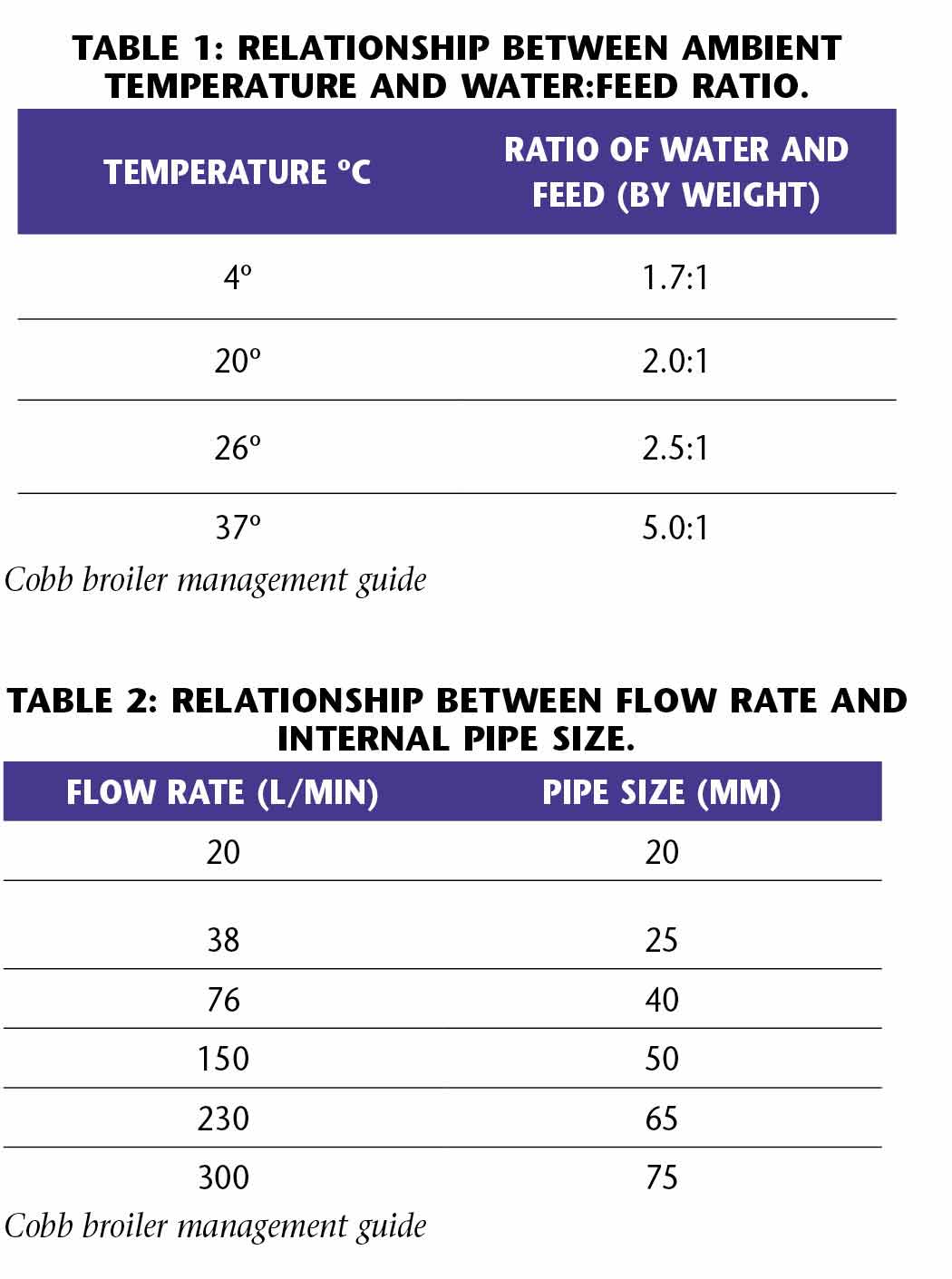
Factors overlooked
By Chance Bryant Cobb-Vantress
Features Broilers Poultry Equipment Production Poultry Production ProductionWater management is one of the most crucial components in a top-performing broiler flock.
 This shows proper water supply line in newer housing. A 51mm pipe is used to supply enough volume to keep up with demand. Separate 19mm pipes, individually provide water for front half drinkers, back half drinkers and foggers/cool cells.
This shows proper water supply line in newer housing. A 51mm pipe is used to supply enough volume to keep up with demand. Separate 19mm pipes, individually provide water for front half drinkers, back half drinkers and foggers/cool cells. Water management is one of the most crucial components in a top-performing broiler flock. Broilers have advanced to grow faster, become larger with more breast meat, eat more feed at younger ages and be far more efficient than their predecessors, increasing their demand for water. The modern broiler house is also equipped with cooling equipment that utilizes large amounts of water during hot weather. All this has put more emphasis on the need for ample water supply and storage so birds can perform successfully. Chance Bryant focuses on water flow rates and water temperature – factors that sometimes get overlooked.
How much water does a broiler need? How much will a bird drink every day? These questions are often asked by producers and are very appropriate in achieving high performance, as water consumption and feed consumption are highly correlated (Table 1). In high performing flocks, at around 21 C, modern broilers on average will consume 1.8 to two times more water than feed, in weight. Consumption is dependent on house temperature. In hot climates, flocks can consume up to five times in weight the amount of feed they intake.
Water consumption will vary depending on environmental temperature, feed quality and bird health.
- Water consumption increases by six per cent for every increase in 1 C between 20-32 C.
- Water consumption increases by five per cent for every increase in 1 C between 32-38 C.
- Feed consumption decreases by 1.23 per cent for every increase in 1 C above 20 C
Any substantial change in water usage should be investigated as this may indicate a water leak, health challenge or feed issue. A drop in water consumption is often the first indicator of a flock problem.
To evaluate flock performance properly we need to know how much water birds are consuming every day. More advanced water meters record not only ‘daily’ consumption attainable, but enable an understanding of consumption at critical times of the day and critical times during the flock – both very relevant in assuring proper water intake.
These critical times can include feed changes, turning birds out from the brood area to three quarters or full house, transitioning from power ventilation to tunnel, field vaccinations, etc. If you monitor consumption during these periods, you can better understand if flocks are being properly managed.
WATER VOLUME AND ADEQUATE FLOW
Many of today’s high performance broilers are being raised in housing built for the broiler of the past. Unfortunately these houses are undersized, with inadequate plumbing and pipe sizing that struggles to keep up with the needs of modern high-performing and fast growth rate broilers. Worsening this situation can be the demand of cool cell systems, which often require twice as much water as the birds drink.
With an inadequate plumbing system or pipe sizing water may be diverted from drinkers to the cooling system which will restrict water supply to the birds and so lower feed consumption. Many broiler farms have multiple houses with large numbers of birds in each house. Often, the lights come on at the same time in every house and without adequate water volume and flow rates some houses can experience a shortage of water during these high peak periods.
All of these factors can decrease weight, increase FCR, create uniformity issues and place undue stress on birds, which can lead to an unhealthy flock.
There are many options used to ensure water volume/flow will meet bird needs at high peak demand times. Digital water meters connected to the house controller can monitor water consumption not only on a 24-hour basis but also in allotted time increments during the day.
This information can help determine if our water system is keeping up at critical ‘high demand’ times, as when the lights come on after a dark period. Knowing this can be very helpful in tracking down performance issues on a farm, especially one with big, multi-houses.
WATER TEMPERATURE
As well as water quality and availability, the temperature of the water that birds are drinking needs to be considered. During the first few days of brooding, consumption rates are low and the water flow through the system is minimal. In a modern broiler house with very efficient heating systems the water temperature can easily exceed 35 C.
This water temperature is not as palatable to chicks and can lead to low intake and poor performance. Excessively warm water can also contribute to increased bacterial growth within the drinker system which can lead to higher bacterial infection within the flock. The ideal water temperature should be around 10-14 C coming from the source.
Water consumed by the birds should never be allowed to increase above 30 C. If this occurs the drinking system should be flushed periodically to maintain cooler, fresher water.

SUMMARY
Water is one of the crucial aspects of broiler flock management. Understanding and managing water in broilers — providing them with fresh, clean, ample water when they need it — will help to achieve success flock after flock.
Chance Bryant (chance.bryant@cobb-vantress.com), is technical manager – North America west region for Cobb-Vantress.
Print this page